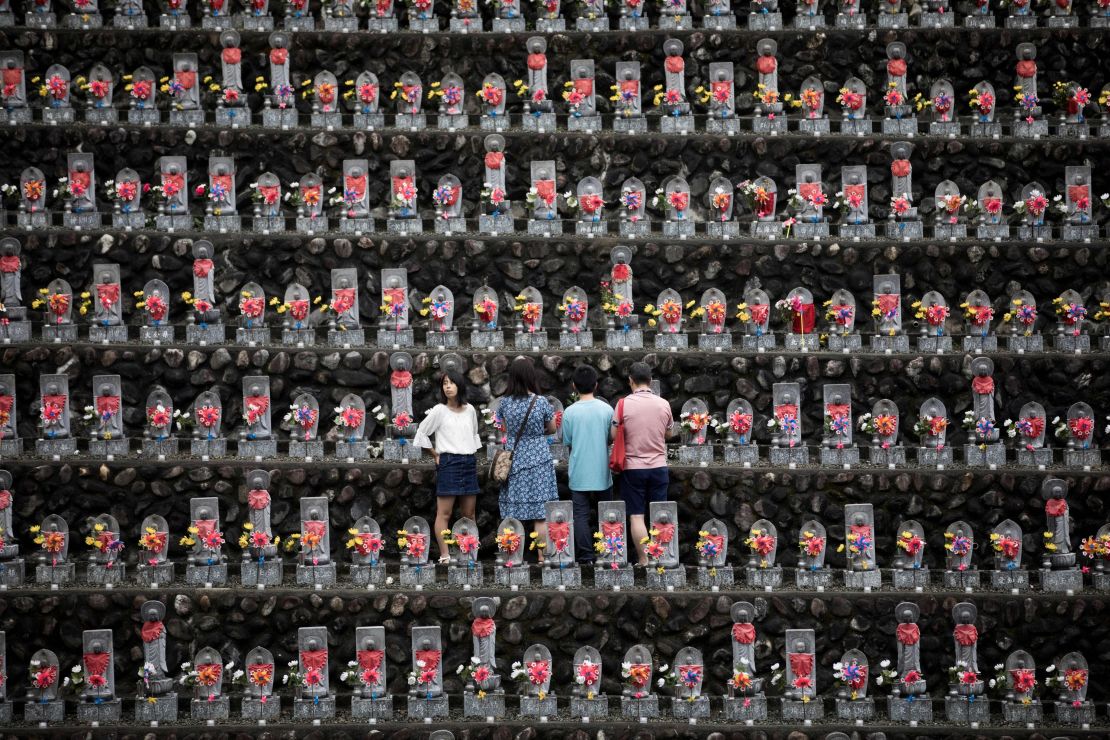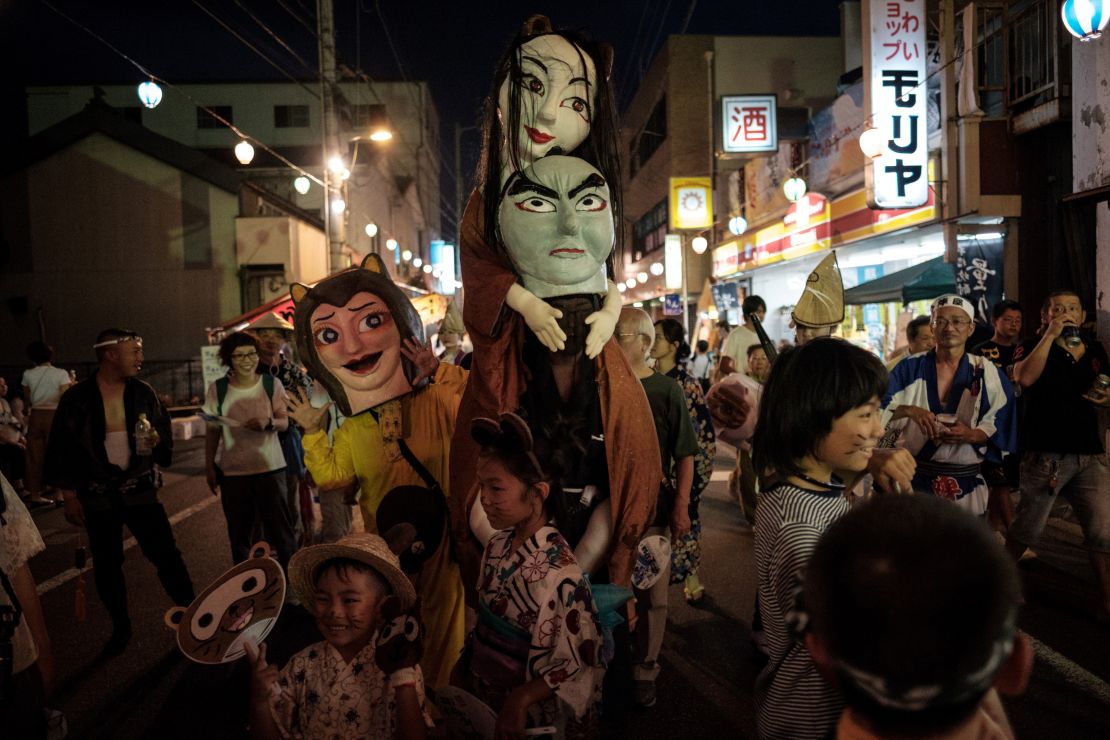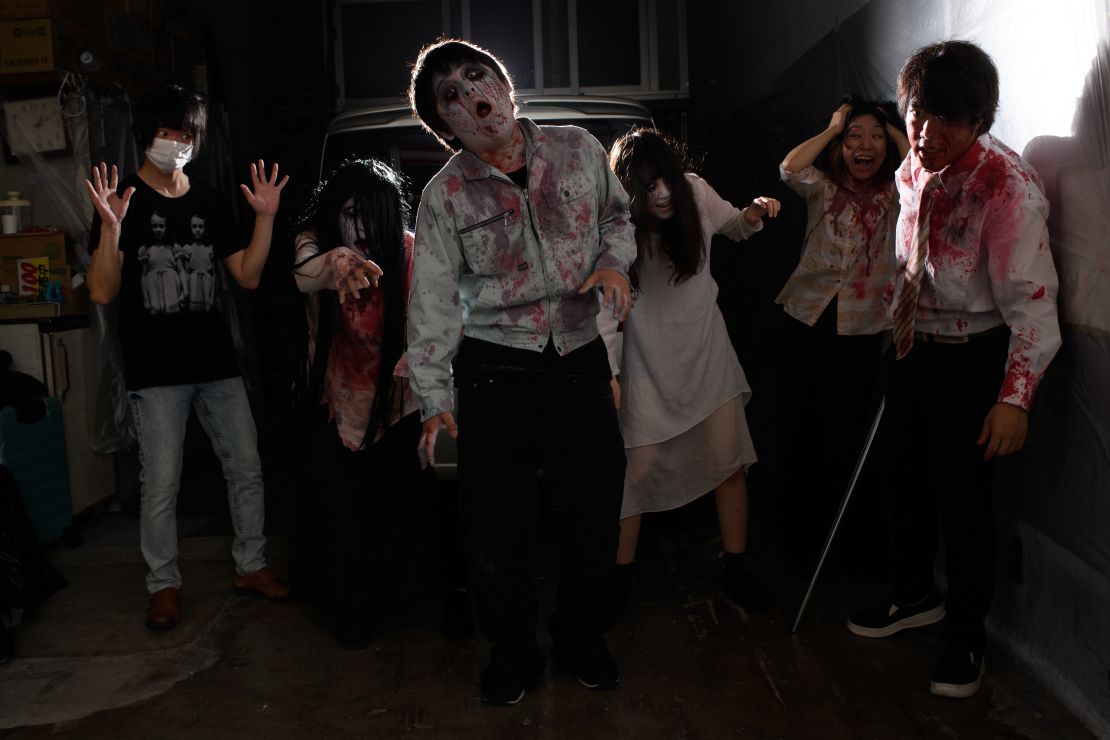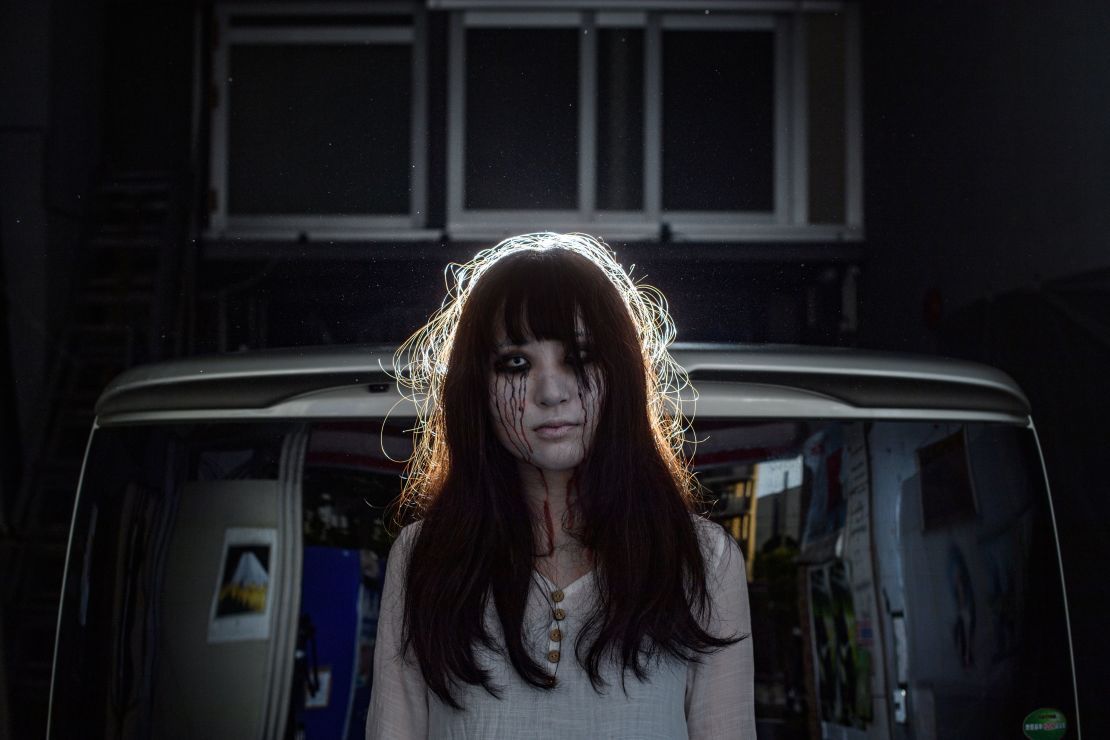High temperatures during the Tokyo Olympics have been making headlines around the world.
In fact, the event may go down as one of the hottest and most humid in the history of the Games.
Last week, current world No. 2 tennis player Daniil Medvedev said the heat and humidity were “some of the worst” conditions he had played in, even asking who would be responsible if he died.
Elsewhere, athletes have been seen donning ice vests, wet towels and downing water after competing.
But the temperatures and high humidity currently cooking the capital are not unusual. Japanese summers are notoriously sticky and sweaty, and for many Japanese people, spooky.
Friends flock to haunted houses, head to the movies for horror flicks or visit graveyards after dark, all in an attempt to scare themselves into literally getting the chills – in effect forgetting all about the sweltering heat.
As the mercury rises, so do the dead
As the temperatures soar in Japan it’s believed that the boundaries between the world of the living and the dead are at their thinnest and yurei (spirits) are able to cross over.
Summer is marked by the festival of O-bon, which usually takes place in mid-August.
“O-bon is the Buddhist festival of the dead, in which the spirits of deceased family members and ancestors are honored,” explains Yoshiko Okuyama, a professor of Japanese Studies at the University of Hawai’i, Hilo.

According to Okuyama, the festival is based on a Buddhist tale in which one of the Buddha’s disciples, Mokuren, learns that his deceased mother has ended up in hell. He then performs a ceremony to save her soul.
“This Buddhist myth eventually developed into the tradition of urabone (O-bon) as a time to hold a memorial service for the spirits of deceased family members,” she says.
“It is said that the spirits return from the anoyo (the spiritual world) to the konoyo (the world of the living) in order to attend the festival with the living.”
During O-bon, families reunite to pay respects at ancestral graves, light bonfires, clean the graves, dance the bon-odori, eat and drink.
It’s believed that if a spirit is cared for by the family, then they are able to pass peacefully into the next world; in return the dead provide protection for their living relatives.
But, if the deceased are not cared for, or they died in a violent manner, the spirit may come back bearing grudges.
“Even the spirits of people who died yet cannot rest in peace are thought to visit us!” Okuyama says.
“Naturally, there is no better time than summer to talk about supernatural phenomena.”
Scary stories
Summer may be a spiritual season but there’s another reason that it’s a spooky time in Japan. Chilling ghost stories are often told in the summer months, a tradition that emerged well before the days of air conditioning to help cool off.
“Psychologically, being spooked may help us temporarily forget the deadly heat of Japan’s summer,” Okuyama says.
According to Origuchi Shinobu (1887-1953), a scholar of Japanese folklore studies, Kabuki theaters began to perform ghost stories in the summer – called suzumi shibai (cooling-off plays) – during the Edo period (1603-1868).
“Origuchi found that scary ghost tales had been traditionally performed in rural communities and that kabuki adopted that custom,” Okuyama explains.

One of the most famous examples of these bone-chilling plays is “Yotsuya Kaidan.” Written by playwright Tsuruya Namboku IV in 1825 and adapted for numerous films, the plot is centered around a man named Iemon who murders his wife, Oiwa. Disfigured by poison, she returns as an onryō, or vengeful ghost, to exact revenge.
Her appearance – dressed in a white burial kimono and with long, straggly black hair covering a pallid face – has become the archetype for Japanese horror throughout the ages, “The Ring’s” Sadako being one famous example.
“Contemporary media outlets such as films follow the tradition of suzumi shibai by releasing new ghost stories at this time of year,” Okuyama adds.
These days, the balmy Japanese summer is intrinsically linked with ghostly goings-on. Horror movies are screened in cinemas, scary shows are scheduled on TV about spooky phenomena – including an allegedly haunted phone booth in a Tokyo park – and haunted houses are filled with chill seekers.
Testing your liver
Indeed for some, there’s no better way to spend a sweltering summer day than by hitting up an obake yashiki, or haunted house.
The hotter it is, the more popular they are. During a scorching 2010 heatwave, it was reported that Japan’s haunted houses and ghostly theme-parks saw a surge in customers.
The country’s ghost houses have had a long time to evolve – the first iteration, “Omori’s Haunted Teahouse,” opened to visitors in 1830. A step above simple ghost houses with trundling trains and bedsheet ghosts, obake yashiki are usually gory, freakishly realistic and not for the faint-hearted.
The 900-meter-long hospital-themed maze at “Super Scary Labyrinth of Fear” at Fuji-Q Highland, for instance, features rooms like a “decayed morgue” scattered with body parts and blood.
Takeshi Saito, alias Saito Zombie, is a self-admitted “horror planner” whose job is to make visitors scream with fright at the Daiba Ghost School in Odaiba, Tokyo. This haunted house has a frighteningly contemporary backstory: a deserted high school where a student has committed suicide. You explore by flashlight.
“In Japan, there’s this old kind of game to endure being scared called kimodameshi,” says Saito, who’s been working in haunted houses for 16 years.
Kimodameshi (literally “testing the liver”) is all about courage. It’s a strangely seasonal pastime, often taking place on school trips or while camping.
“The custom of kimodameshi is a summer event played in a group as a contest to see who is the bravest of all,” says Okuyama.
“It typically takes place in a graveyard at night (but any spooky place, such as a dark forest, will do), where spirits of the deceased are believed to be most likely seen.”

It’s similar to the summertime tradition of telling ghost stories, Okuyama explains, a custom that seems to be associated with O-bon and the temporary connection of the world of the living and the afterlife.
“The custom of O-bon may have led to the modern haunted house culture,” Saito says.
There are also similarities with hyakumonogatari (“100 Stories”), a parlor game thought to have begun with samurai testing their liver by telling spooky stories, extinguishing a candle after each one.
According to Saito, it’s also a stress reliever: screaming in a haunted house is as good as taking a deep breath. “If you’re scared, shout loud,” he says.
New fear

This summer sees a newcomer to the world of fear-inducing entertainment: Mugan (literally “No-face”), a mobile horror experience currently located at the bottom of Tokyo Tower.
“From a business perspective, summertime is important in terms of marketability,” says Fumiaki Mae, part of the team that developed Mugan. “In Japan the summer horror experience has taken root and is now ubiquitous.”
Similar to the Tokyo drive-in haunted house that made headlines in 2020, the concept for Mugan came from the challenge of creating a horror house when entertainment venues such as theme parks were closed due to coronavirus restrictions and people were encouraged to practice social distancing.
“We realized that we could provide a horrifying experience in the small space in the back of a truck,” Mae explains.
First, visitors watch a gory short film by director Hiroshi Shinagawa, in which a woman becomes disfigured (much like Oiwa). With this multimedia aspect, and complete with a cutting-edge sound-system and actors in horrifically realistic make-up, it’s a very modern take on the more traditional obake yashiki.
Now that the world’s witnessed just how hot Tokyo can get in the summer, thanks to the images of sweltering athletes on screens, it’s not hard to understand why the Japanese population resorts to all sorts of measures to keep cool – or at least forget about the heat for a few moments.
















